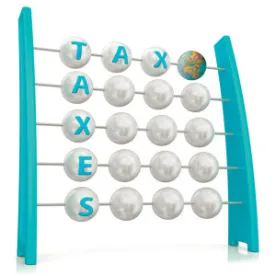While February is usually the month for valentines and candy conversation hearts, I hope you will use this month to give a little love and attention to one of the often overlooked “other” taxes applied to payments from nonqualified deferred compensation plans (NQDC Plans)—FICA taxes! Companies commonly fail to implement the unique FICA tax rules applied to NGDC Plans and these special rules can create confusion for participating executives. This can result in the company’s potential exposure to IRS penalties, higher tax liabilities for the company and the employees, and unhappy employees. Confirming proper FICA tax treatment for your NQDC Plans is time well spent.
A Refresher: What are FICA Taxes?
FICA taxes (often referred to as “payroll taxes”) are a combination of the Social Security tax (6.2 percent tax applied up to a wage base limit—$132,900 for 2019) and the Medicare tax (1.45 percent tax on all wages). Higher-paid employees may also owe an additional 0.9 percent Medicare surtax on wages above a certain threshold. These FICA taxes must be reported to the IRS by employers and paid by both the employer and the employee on all wages. Wages generally include any compensation paid by an employer to an employee for the employee’s services, even if those amounts are ultimately paid to an individual after he or she terminates employment. The nature of the payment, and not the timing of the payment, affects how amounts should be reported to the IRS and what taxes are due (for a related discussion, see our prior article about how to properly report compensation paid to former employees).
The standard rule is that FICA taxes must be withheld from the employee and paid by the employer at the time the wages are actually paid to the employee.
Nonqualified Deferred Compensation Plans Use a Special Timing Rule for FICA Taxes
Most employers and employees understand that amounts properly deferred under a NQDC Plan are not subject to federal income taxes until the amounts are actually paid to the employee. However, FICA taxes apply a “special timing rule” for NQDC Plans, which could make those FICA taxes due to the IRS before the underlying deferred compensation is actually paid!
The Special Timing Rule. FICA taxes are due on deferred compensation amounts on the later of (i) when the employee provides the related services, or (ii) when the compensation is no longer subject to a substantial risk of forfeiture (meaning: when the amounts are vested). For typical NQDC Plans— where the employee is only entitled to receive employee salary deferrals and/or employer contributions (plus any earnings) that are credited to his or her plan account—this special timing rule means that FICA taxes must be reported to the IRS and withheld as follows:
-
Employee Salary/Bonus Deferrals: FICA taxes are reported and due in the year in which the employee defers the compensation.
-
Employer Contributions: FICA taxes are reported and due in the year in which the contribution amount (and any earnings) vests. Note: When a NQDC Plan applies a vesting schedule for employer contributions (e.g., 25 percent vests each year for four years or a 3-year cliff vesting), administration and recordkeeping for FICA tax purposes can be complex.
Formula-Based NQDC Plan Benefits. If a NQDC Plan uses a formula to determine a participant’s benefit under the plan (similar to a benefit formula for a defined benefit pension plan), then FICA taxes need to be reported and withheld once the benefit amount is vested AND “reasonably ascertainable.” Typically, this means that employers cannot calculate the employee’s actual benefit under the NQDC Plan when the benefit vests. Instead, the employer must wait until the individual terminates employment and the employer can finalize all of the numbers necessary to calculate the formula (e.g., final years of service and compensation). As a result, under a formula-based NQDC Plan, FICA taxes may be deferred until the year in which the employee terminates employment.
Advantages of the Special Timing Rule. There are two benefits to having this special timing rule for NQDC Plans, which generally result in a lower overall FICA tax obligation for both the employer and the employee:
- Once the amounts are included as wages for FICA taxes, those amounts (and any related earnings) cannot be subject to FICA taxes again. This means that any future earnings on those previously included amounts are not subject to FICA taxes at any point.
- Typically NQDC Plan amounts will vest (or be reasonably ascertainable for formula-based NQDC Plans) while the employee is currently employed or immediately upon termination and, as a result, has other regular wages in the year to satisfy the Social Security wage base limit. This means that many of these deferred compensation amounts (and their earnings) will escape Social Security taxation altogether and only be subject to the Medicare tax.
Now That I Know About FICA Taxes and the Special Timing Rule, What Next?
-
Step One: Find out whether the FICA special timing rule is being properly applied to your NQDC Plan payments – you may need to talk to your payroll department and/or your plan’s third-party recordkeeper to confirm.
-
Step Two: Determine whether any corrective action is needed if you find out that FICA taxes have not been properly administered. Employers have an affirmative obligation to the IRS to properly report and withhold income and payroll taxes, plus the affected employees will care about receiving the tax benefits of the special timing rule. If you are not properly reporting and paying FICA taxes for your NQDC Plans, the IRS could impose penalties and interest on the company for underpayment.
- Note: There are ways to identify and correct FICA tax failures with the IRS for currently open tax years (generally the last three years). The general FICA tax rules must be applied for any amounts that cannot be corrected and FICA taxes must be reported and withheld when those amounts are paid.
-
Step Three: Review your participant communications to see if updates are needed to address FICA tax issues. Even if you are properly applying the special timing rule, your communications to participating executives should be clear to avoid confusion about when the FICA tax amounts are withheld from the individual’s pay.
-
Step Four: Confirm with your recordkeeper and payroll provider that there are adequate recordkeeping and administrative processes in place to track amounts that have already been subject to FICA taxation (for example, employer contributions that have already vested) and those amounts that have not.




 />i
/>i

